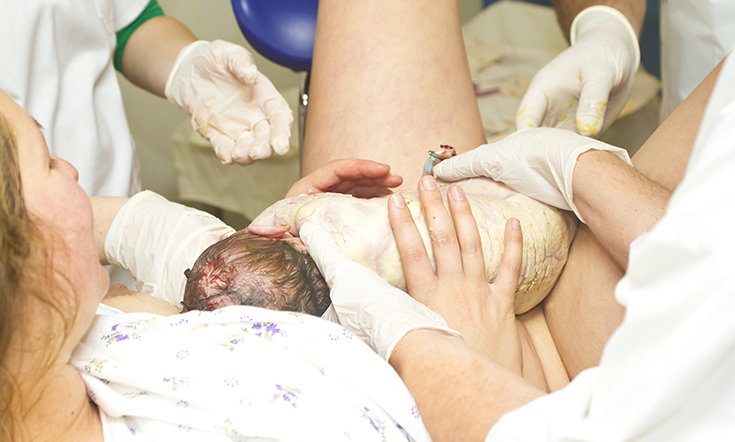

Up to one in four Australian women have their baby delivered by caesarian section, be it emergency or elective.
For decades, it was thought that once a woman had experienced a c-section, all her future babies would need to be delivered the same way.
But this is no longer the case, necessarily.
Thanks to improvements in obstetric care and surgical techniques, many women who have had a caesarian can safely experience a vaginal birth.
What is a VBAC?
This is known as a Vaginal Birth After Caesarean Section, or VBAC, and with careful selection of patients and good obstetric care, roughly 5 to 8 women out of 10 who attempt VBAC are successful.
Whether or not you’re suitable for VBAC will depend on your medical history and the progress of your current pregnancy.
And while you have the right to make a decision to attempt VBAC, ultimately your obstetrician is the best person to make the final call as to whether or not it’s safe to do so.
In doing so, he or she will consider factors such as the location of the uterine scar from your previous caesarian, the reason for the previous caesarian, how you’d like to deliver your baby, your access to a hospital that’s equipped for an emergency caesarian, how many more babies you hope to have and the time since your previous surgery.
Preparing for Vaginal Delivery
Many women are enthusiastic about attempting VBAC while others can be quite nervous, despite their desire to do so, especially if their previous caesarian was an emergency.
Remember to discuss all of your concerns with your obstetrician as understanding labour its stages can make a real difference to your state of mind.
The same pain relief options are available for VBAC as during a regular vaginal birth.
Risks of VBAC
When all risks of labour and birth are considered, VBAC for an appropriately selected woman has fewer risks of complications than routine, repeat caesarians.
But VBAC does have some small but significant risks to consider, most notably, rupture of the uterine scar, which although uncommon is a serious complication.
A rupture can be cause by the uterus’s forceful contractions during labour and pressure against the scar.
The signs of uterine rupture can be difficult to detect, which is why continuous electronic monitoring of the baby is often recommended.
Rupture of the uterine scar can be life-threatening for mother and baby and an emergency caesarian will be required. Fortunately, ruptures are rare, only occurring in around 1 in every 200 VBAC attempts.
The most common reason for an emergency caesarian during VBAC is failure of the labour to progress and this happens in 2 to 5 cases in every 10, which is why it’s crucial for your VBAC to take place in a hospital equipped to perform emergency surgery.
So if you would like to experience a vaginal birth following a caesarian, it is possible.
Just remember to be open and honest with your obstetrician to ensure the safest outcome for both you and your baby.























